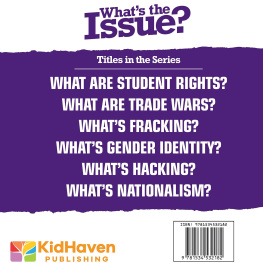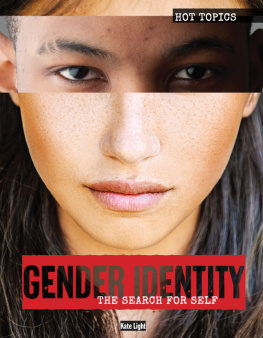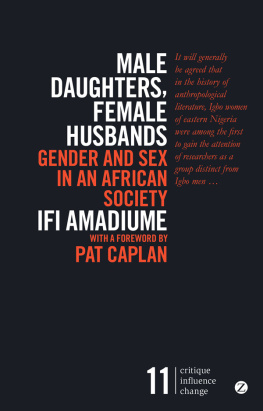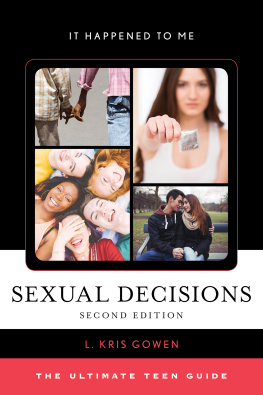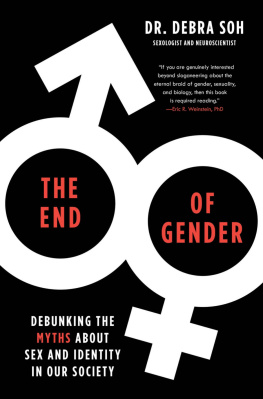About the Author
Cynthia Winfield graduated from Lesley College in 1992 with a bachelor of science degree in middle school education and from Emerson College in 2000 with a master of fine arts degree in creative writing. Once a licensed educator in the state of Massachusetts, she adored teaching middle school reading, writing, and language arts in a Boston suburb. Her interest in quiet political activismmostly around issues of equal rights, health care, literacy, and educationbrought her together with the gay community starting in the mid-1980s, when she began volunteering for the AIDS Action Committee of Boston. She later served as volunteer secretary for the McLean Association of Gay, Lesbian, and Bisexual Issues committee of McLean Hospital, in Belmont, Massachusetts. An active participant in Seeking Educational Equity and Diversity (SEED) seminars from 1999 to 2008, Cynthia relished interactions with colleagues at her local SEED seminars, at New England SEED Leaders seminars, and at gatherings of the national SEED program at the Wellesley College Center for Research on Women. Upon relocating to Tennessee, she left public education for small-scale farming and livestock husbandrymaintaining a farm blog (pandcworganicfarm.blogspot.com) for a few years. After interviewing for the United States Decennial Census in 2010 and serving in an administrative capacity assisting her pastor, she took up writing inspirational fiction set in Middle Tennessee. Cynthias work on myriad surveys for the US Department of Commerce, the US Department of Health and Human Services, and the US Food and Drug Administration provided her opportunities to interact with a vast array of humanity across middle and east Tennessee, Virginia, and Kentucky. A 2012 graduate of the Institute for Integrative Nutrition, she is passionate about the healing power of unprocessed food and subscribes to alternative health practices. Settled with her family on a few acres outside of Nashville, she practices gratitude daily, enjoying time in nature and among animals, and continuing her quarter-century practice of reviewing books for VOYA: Voice of Youth Advocates magazine. She is grateful for the opportunity to educate others through the publication of this book.
Acknowledgments
W hile many resources were used to compile this book, several people deserve recognition.
Sincere thanks to Arlene Hirschfelder, It Happened to Me series editor, for her careful, deliberate attention to the manuscript and for her support through circumstances that necessitated deadline extensions. Thanks to Phyllis Winfield, whose offhand suggestion one morning many years agoWhy dont you do a book about gender?was the genesis of the first edition of this book. Genuine thanks to Jamie Shupe, the first person in the United States to be granted a non-binary gender in the courts, for the time they devoted to discussing issues related to skeletal physiology (and how having a male skeleton may provide a transgender female athlete with advantages despite a lack of testosterone) and concerns about how adolescents transitioning affects future fertility. Grateful thanks to Hans Lindahl, intersex activist for interACT Advocates for Intersex Youth, for her thoughtful editing of chapter 5 about intersex bodies, her patient explanations about why the words penis and vagina were preferable over the vague male body and female body, and her tireless work in finding other interACT advocates to obtain permission to use their photographs.
Many thanks to the young transgender, genderqueer, and nonbinary persons who submitted writings and photographs for this edition. Having to select which pieces to include was challenging, especially in the face of young people (all adults, yet young to me) baring their souls and sharing their photographs for the greater good. I wish you all the best. And, thanks to Jack James, once a student at the middle school where I taught, who shared his thoughts about contemporary filmand encouraged my work on this book.
Further, thanks to Zoe Perry-Wood, gifted social documentary photographer, who has created a body of work photographing the Boston Alliance of Gay and Lesbian Youth (BAGLY) Prom over the last decade. Her series Hanging in the Balance: Portraits from the BAGLY Prom documents lesbian, gay, bisexual, transgender, queer, questioning, and nonbinary youth at their promthe prom where they may come as they are to celebrate and be celebrated.
Finally, thank you to the multitude of authors of young adult fiction who are busily publishing stories featuring transgender, nonbinary, intersex, lesbian, gay, bisexual, queer, and questioning characters. How I wish I could have included more of your titles within these pages. Your stories make an important difference. And thank you to the myriad television and movie producers creating more shows than I could possibly watch, review, or include herein. That shows featuring transgender actors and characters are becoming the norm is good. I may still have a soft spot in my heart for Corporal Max Klinger from the old television show M*A*S*H, but his cross-dressing in search of a Section 8 discharge from the US Army during the Korean War is far from what it means to be transgender in todays military. Your stories, in the face of continued divisiveness across the country and around the globe concerning issues of gender and sexuality, gives me hope for the future.
Appendix: WPATH Identity Recognition Statement
INTRODUCTION
T his book is about gender identitythe sense a person has of whether he or she is a boy or a girl, or bothand what happens when this sense of self conflicts with the persons anatomical sex. This book examines how hormones affect a developing fetus and how male and female brains may differ, considers the wealth of language that exists around these issues, investigates the presence and prevalence of intersex persons, briefly travels the road of transgender historyincluding current laws and protectionsand concludes with ways anyone might help to make the world a better place for all of us, including those whose gender identity differs from the norm. Although issues faced by the trans community often overlap with those of the lesbian, gay, and bisexual (LGB) community, and while the two communities are often lumped together as onethe lesbian, gay, bisexual, and transgender (LGBT) communitythis book is not about sexual identity. Additionally, although the intersex community is often included in the same mixlesbian, gay, bisexual, transgender, and intersex (LGBTI)it has a different viewpoint and goals. Lumping together sexual and gender minorities provides convenient political alliances, but they represent at least three distinct communities, each with unique issues. For those interested in learning more about gender identity, see the Resources section at the back of the book.
For centuries, male and female gender roles were distinctfor the most part, men worked and provided for their families while women tended to hearth, home, and child rearing. While there have been popular culture representations of men appearing as womenand women appearing as menfor the most part, they have been for entertainment purposes rather than the education and enlightenment of the masses. But garnering an audience for theatrical productions is a far cry from achieving acceptance in daily life. Ellen DeGeneres has given visibility to and normalized lesbians who prefer masculine attire, but acceptance of Ellen on television does not always translate to acceptance of others like her in person. Our twenty-first-century society may imagine itself as having transcended many of the social limitations of our predecessors; however, gender identities, roles, and expectations still shape both our behaviors and the ways in which we are perceived by others, and the gender binary is still accepted as wholly factual by many.


